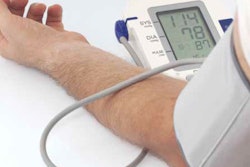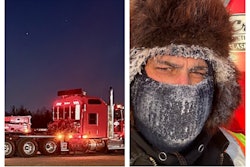 A sore throat can be a sign of the common cold or flu. Either can worsen into pneumonia, which requires a visit to the doctor and time off the road.
A sore throat can be a sign of the common cold or flu. Either can worsen into pneumonia, which requires a visit to the doctor and time off the road.The common cold isn’t much more than an annoyance over a few days. More serious respiratory illnesses, notably the flu and pneumonia, can put the brakes on driving until you feel better.
The common cold is just that — common. The Mayo Clinic says healthy adults can expect to have two or three colds each year. Recovery generally takes a week to 10 days, but symptoms may last longer in people who smoke.
Cold symptoms include a runny or stuffy nose, a sore throat, coughing, congestion, slight body aches or a mild headache, sneezing, a low-grade fever and general malaise. Colds usually can run their course on their own. Symptoms can be treated with over-the-counter drugs.
If you have a fever greater than 101.3 degrees or one that lasts five days or more, see a doctor. Also get checked if your illness includes shortness of breath, wheezing and a severe sore throat, headache or sinus pain.
Adults over 65 are at greater risk to contract the flu, a virus that attacks your respiratory system. Also at risk are people with weakened immune systems; people with chronic illnesses such as asthma, heart disease, kidney disease and diabetes; and people who are obese.
Flu symptoms include a fever above 100.4 degrees; aching muscles in your back, arms and legs; chills and sweats; a headache; a dry persistent cough; fatigue and weakness; nasal congestion; and a sore throat. Symptoms at the flu’s onset can be severe enough to prevent driving.

You usually can treat the flu at home and often don’t need to see a doctor unless you’re at risk for complications. Taking antiviral drugs within the first 48 hours after the first symptoms appear can reduce the length of the illness and prevent more serious problems.
The common cold and flu can turn into pneumonia, which can range in intensity from mild to life-threatening. It is most serious for children and people over 65. Some of the viruses that cause colds and the flu can cause pneumonia, but viral pneumonia is usually mild and less serious than bacterial pneumonia.
Pneumonia symptoms include chest pain when breathing or coughing; confusion or changes in mental awareness; coughing that may produce phlegm; fatigue; fever, sweating and shaking chills; a lower body temperature; nausea, vomiting or diarrhea; and shortness of breath. It is recommended to see a doctor if you have difficulty breathing, chest pains, a persistent cough or a fever of 102 degrees or higher.
Treatment for pneumonia depends on the type and severity, the patient’s age and overall health. Common treatments include antibiotics and medicine to relieve coughs, fever and pain. Hospitalization sometimes is required for patients over 65.
Prevention
The best ways to guard against a cold and the flu are to wash your hands, disinfect your things, use tissues when coughing or sneezing and avoid contact with crowds and individuals who have colds.
It also helps to strengthen your immune system and otherwise take care of yourself. Eat well, exercise, get enough sleep, practice good hygiene and don’t smoke.
The Centers for Disease Control recommends annual flu vaccinations for everyone in the fall.











